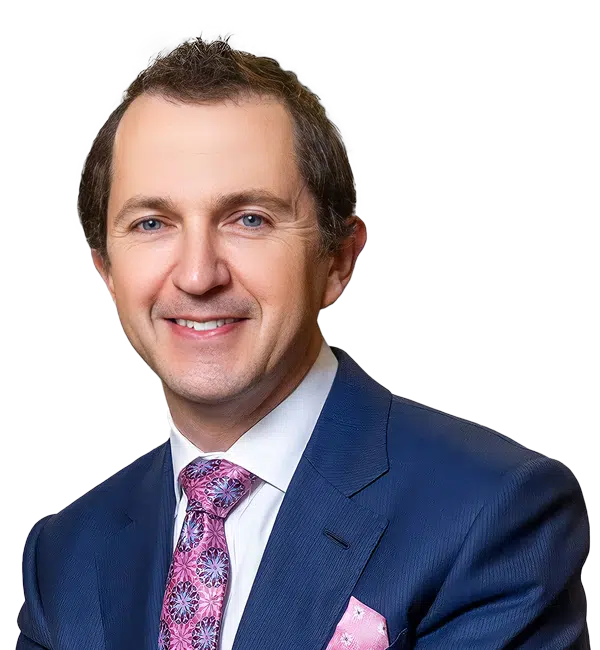Wondering if you’re a good candidate for eyelid surgery? When the eyes look tired or droopy eyelids weigh down your expression, even a well-rested face can appear older. Blepharoplasty is a precise plastic surgery option that refreshes your appearance while respecting your natural features—no drastic changes, just a brighter, more open look.
Ready to learn how it works and whether it’s right for you? In this guide, we’ll walk through candidacy, preparation, and what to expect—so you can move forward with confidence. If you’re exploring a subtle yet meaningful improvement, eyelid surgery may be the thoughtful step that elevates your overall appearance without broadcasting that you had work done.

What is Eyelid Surgery, and Who is it For?
Eyelid surgery, or blepharoplasty, is a cosmetic procedure designed to refine the contours around the eyes by addressing excess eyelid skin, hypertrophic or lax eyelid muscle, and small fat pads. Through a carefully planned incision, the surgeon reshapes tissue to create a smoother, more youthful frame to the eyes while preserving function and natural expression.
Upper blepharoplasty focuses on the upper eyelids, often helping with dermatochalasis and, in select cases, issues related to ptosis that may even affect vision. Lower blepharoplasty targets puffiness and undereye bags, softening shadows and smoothing transitions between the eyelid and cheek. Together or separately, these techniques can restore balance and definition without changing what makes you uniquely you.
How to Qualify for Eyelid Surgery
Deciding whether you qualify for blepharoplasty involves more than just noticing droopy eyelids in the mirror. Surgeons look at overall health, lifestyle habits, and personal goals to determine if the procedure is both safe and likely to achieve the desired results. The following criteria outline what makes a strong candidate.
Be in Overall Good Health
Being in good overall health is a core requirement for eyelid surgery. Surgeons will evaluate whether you have chronic medical conditions such as diabetes, hypertension, or thyroid disease under control, since these can affect healing. A stable health profile helps minimize surgical risks and supports a smoother recovery.
Have Realistic Expectations
While eyelid surgery can deliver meaningful improvements, it’s important to understand what the procedure can and cannot achieve. Patients should view blepharoplasty as a way to enhance their appearance rather than transform it completely. Keeping expectations realistic ensures greater satisfaction with the results and helps maintain a positive outlook throughout the recovery process.
Prepare Your Body for Surgery
Getting ready for blepharoplasty requires thoughtful preparation, much like with any surgical procedure. This includes adopting healthier habits, adjusting medications under your doctor’s guidance, and ensuring your body is in the best possible condition. Preparing in advance helps optimize healing and makes the entire surgical experience smoother and safer.

How to Prepare for a Blepharoplasty Procedure
Preparation plays a major role in ensuring a smooth eyelid surgery experience. Beyond qualifying for the procedure, patients can take specific steps ahead of time to optimize their outcomes. From lifestyle adjustments to pre‑surgery planning, the following tips highlight what you can do before your appointment to feel confident and ready.
Have a Thorough Consultation
Meeting with a facial plastic or oculoplastic surgeon is the first essential step before surgery. During this consultation, you’ll review your medical history, undergo an examination, and discuss your aesthetic goals. It’s also the perfect time to prepare questions so you understand the procedure, risks, and recovery process, ensuring you feel informed and confident.
Avoid Alcohol & Caffeine
Cutting back on alcohol and caffeine in the days leading up to surgery helps your body prepare for anesthesia and recovery. Alcohol can increase bleeding risk and interfere with medications, while caffeine may elevate blood pressure and cause dehydration. Avoiding these substances supports smoother healing and a more comfortable experience overall.
Quit Smoking as Soon as Possible
Nicotine restricts blood flow and slows healing, increasing the risk of bleeding, infection, and poor scarring after eyelid surgery. Aim to stop smoking (and avoid nicotine products like vapes, patches, and gum) ideally 4–6 weeks before surgery and throughout recovery, as directed by your surgeon. If quitting feels daunting, ask about cessation support so your body can deliver oxygen and nutrients efficiently to the healing tissues around the eyes.
Improve Your Skincare Routine
Healthy skin heals better and shows surgical improvements more clearly. In the weeks before surgery, establish a gentle skincare regimen focused on cleansing, moisturizing, and sun protection. Avoid harsh products that may irritate the skin around your eyes. Consistent care helps create a stronger foundation for recovery and enhances the final cosmetic outcome.
Don’t Take Certain Medications
Some medications and supplements can increase bleeding risk or interfere with anesthesia. Common examples include aspirin, NSAIDs (ibuprofen, naproxen), certain blood thinners, and herbs like ginkgo, garlic, ginseng, and St. John’s wort. Do not stop prescribed drugs on your own—review everything you take with your surgeon, who will provide safe, personalized guidance.
Prepare for the Recovery Process
A smooth recovery starts with planning ahead. Stock up on necessary supplies such as cold compresses, eye drops, and comfortable pillows. Arrange for a ride home on the day of surgery, since you won’t be able to drive yourself. Consider enlisting friends or family to help with daily tasks so you can focus on healing without unnecessary stress.
Look for an Expert Plastic Surgeon
Selecting a board-certified, experienced plastic surgeon ensures the procedure is performed safely and artfully. An expert understands the delicate anatomy around the eyes, tailors the surgical plan to your features, and helps manage expectations. In addition, a skilled surgeon can advise whether complementary treatments like dermal fillers or a brow lift may better address sagging forehead skin or work in combination with blepharoplasty for balanced, natural-looking results.
Schedule a Blepharoplasty Consultation Today
Choosing an experienced surgeon matters. The eyelid area involves delicate anatomy—skin, muscle, fat, and the structures that protect your eyes—so precision and judgment are essential to achieve natural, harmonious results and safeguard ocular function. An expert can tailor technique to your goals, minimize downtime, and help ensure refined outcomes that age gracefully.
Led by internationally recognized facial plastic surgeon Dr. Alexander S. Donath, our practice combines advanced technique with a meticulous, aesthetic eye. A frequent invited speaker at global meetings, a multi‑year Castle Connolly and Cincinnati Magazine Top Doctor, and a national trainer for Allergan and Galderma, Dr. Donath attracts patients from across the U.S. Ready to take the next step? Call 513‑891‑5438 or visit our contact page to schedule your appointment and personalized consultation.
